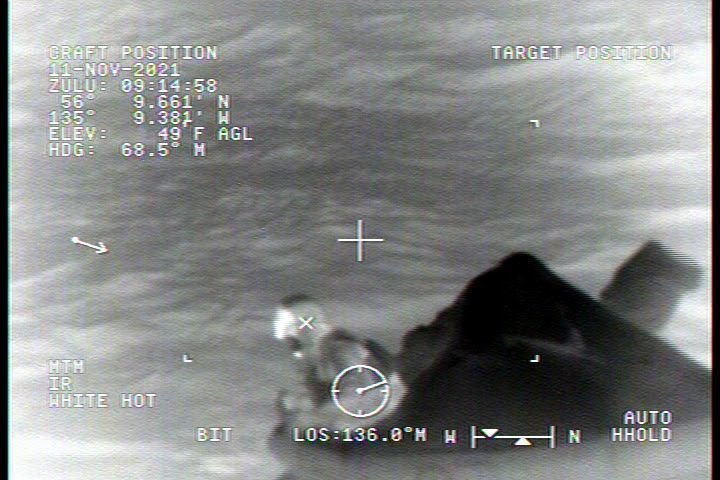
A US Coast Guard aircrew rescued four people from a raft Wednesday, Nov. 10, 2021, approximately 13 nautical miles west of Cape Ommaney, Alaska. Photo courtesy of the US Coast Guard.
When watchstanders at Alaska’s US Coast Guard Sector Juneau sounded the “SAR alarm” around 10:45 p.m. on Wednesday, Nov. 10, this was all the Air Station Sitka crew knew: A 58-foot fishing vessel was taking on water 15 nautical miles off Cape Ommaney, and the four mariners on board couldn’t keep up with the flooding.
“This, for us, was very urgent. So we were as fast and efficient as we could be getting safely to their position,” Lt. Tripp Haas, one of the two pilots in the MH-60T Jayhawk helicopter that flew to the vessel’s aid, told Coffee or Die Magazine.
The helicopter barreled down the Sitka Sound and veered across Biorka Island, and peering through their night vision goggles, Haas and fellow pilot Lt. Kyle Murphy said, “Whoa.”
A parachute flare arced into the black of the Alaskan night, fired by the crew of the F/V Julia Breeze. Fluttering down, it bathed in bright light the pilots’ destination 45 nautical miles in front of them.
If the Julia Breeze’s crew survived, they’d be in tubby Gumby survival suits, heavy with seawater. And if they were really lucky, they’d be inside a survival raft. But a lot of rescues don’t play out like that, and the Coast Guard crew wondered whether they’d find the mariners at the mercy of waves a dozen feet tall, buffeted by 30-knot winds.
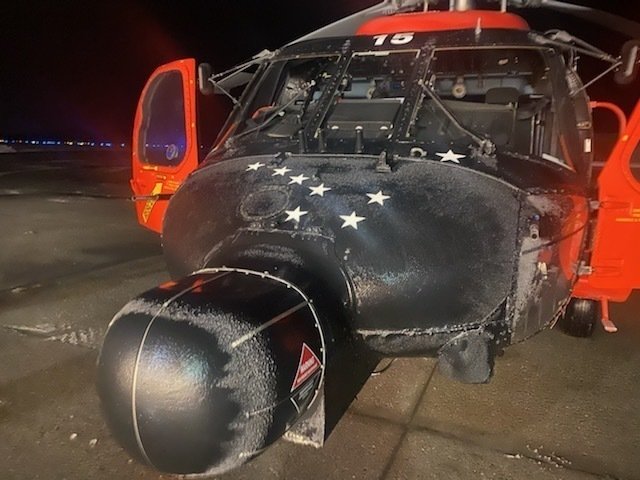
The four-man crew in the Jayhawk wouldn’t lie. They already were bone tired. They’d been out on rescues all day and had scrambled for the search and rescue mission with only an hour left until their watch was supposed to end.
“But with stuff like this, when you see a flare like that pop off, you’re not thinking about flight time or anything like that,” Murphy said. “It’s when the rubber hits the road.”
Thirty minutes later, when the Jayhawk was 10 nautical miles away from the last-known location of the fishing vessel, the pilots saw their first strobe light in the water. Then more. Dozens of strobes seemed to be swirling in the waves.
All four members of the aircrew were trying to count all the flickers below when another flare rocketed toward the clouds. In the glare, they saw a pair of faces staring up at them from a rain-tarp-covered raft.
Those weren’t strobes in the water. Twinkles of moonlight played across a string of fishing gear splayed across the waves.
It was a debris trail. The Julia Breeze had gone below, taking its radio with it.
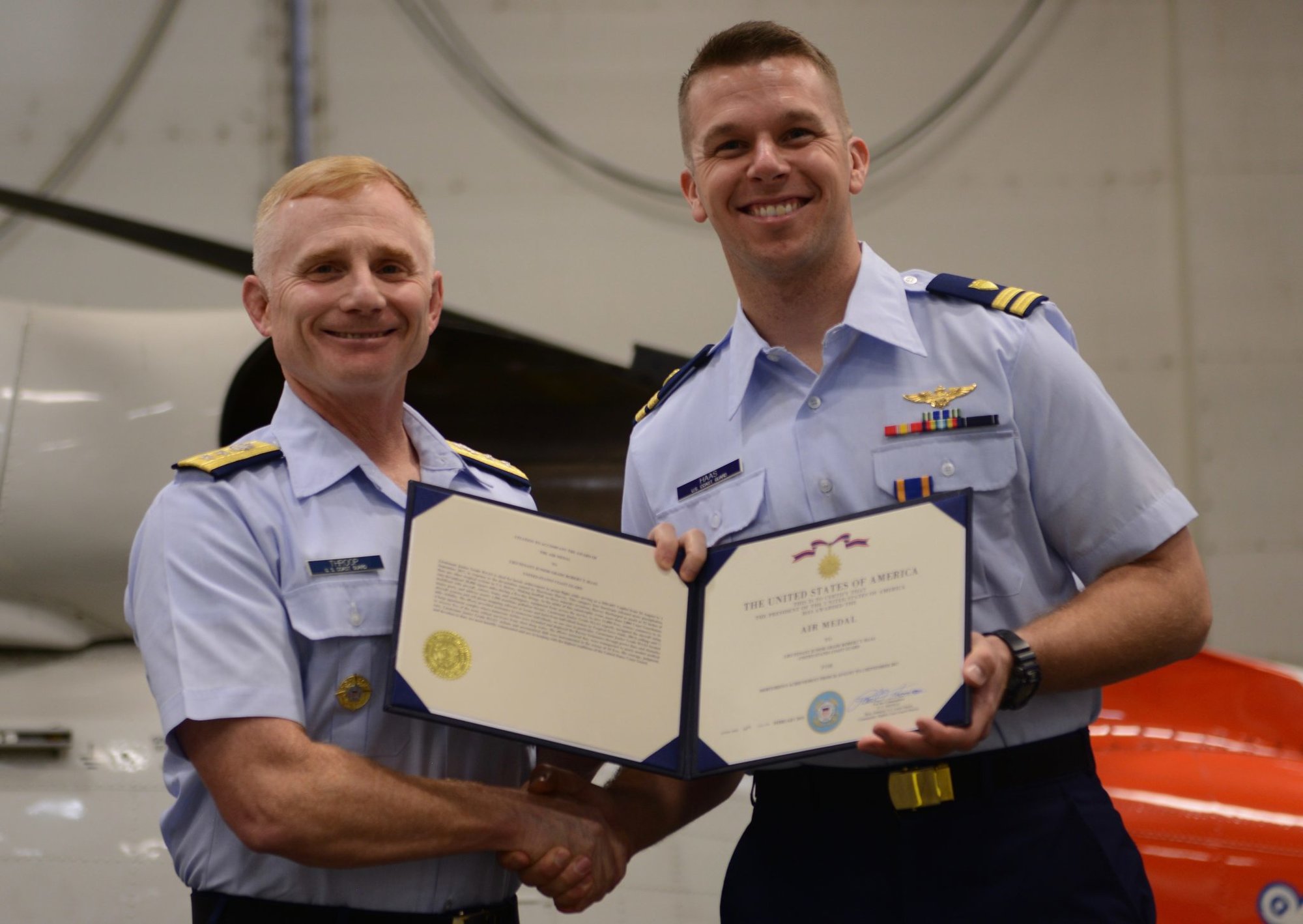
The Coast Guard team ginned up a quick rescue plan: Aviation Survival Technician 2nd Class Juan Espinosa-Gomez would enter the roiling sea, haul each mariner four football fields away from the raft, place the mariner on a basket to be hoisted into the Jayhawk, and then chop his way back through the waves to the raft.
“We were generating a lot of rotor wash. The worst thing we can do is flip a raft with the rotor wash, so you have to get some distance from it,” Haas said.
The pilots watched Espinosa-Gomez make four trips. Lt. Murphy called the elite rescue swimmer’s toil “inspiring.”
“We were watching him and applauding in the helicopter,” Murphy said, adding that he isn’t even an Air Station Sitka pilot. Murphy came down from Kodiak to help round out the staff.
And the aircrew’s flight mechanic, Aviation Mechanical Technician 2nd Class Will Chau, had never operated a hoist, except in school or training. But during Wednesday’s daring rescue, he performed flawlessly, even when each mariner abeam the helicopter door tried to bolt out of the rescue basket before it reached the cabin door.
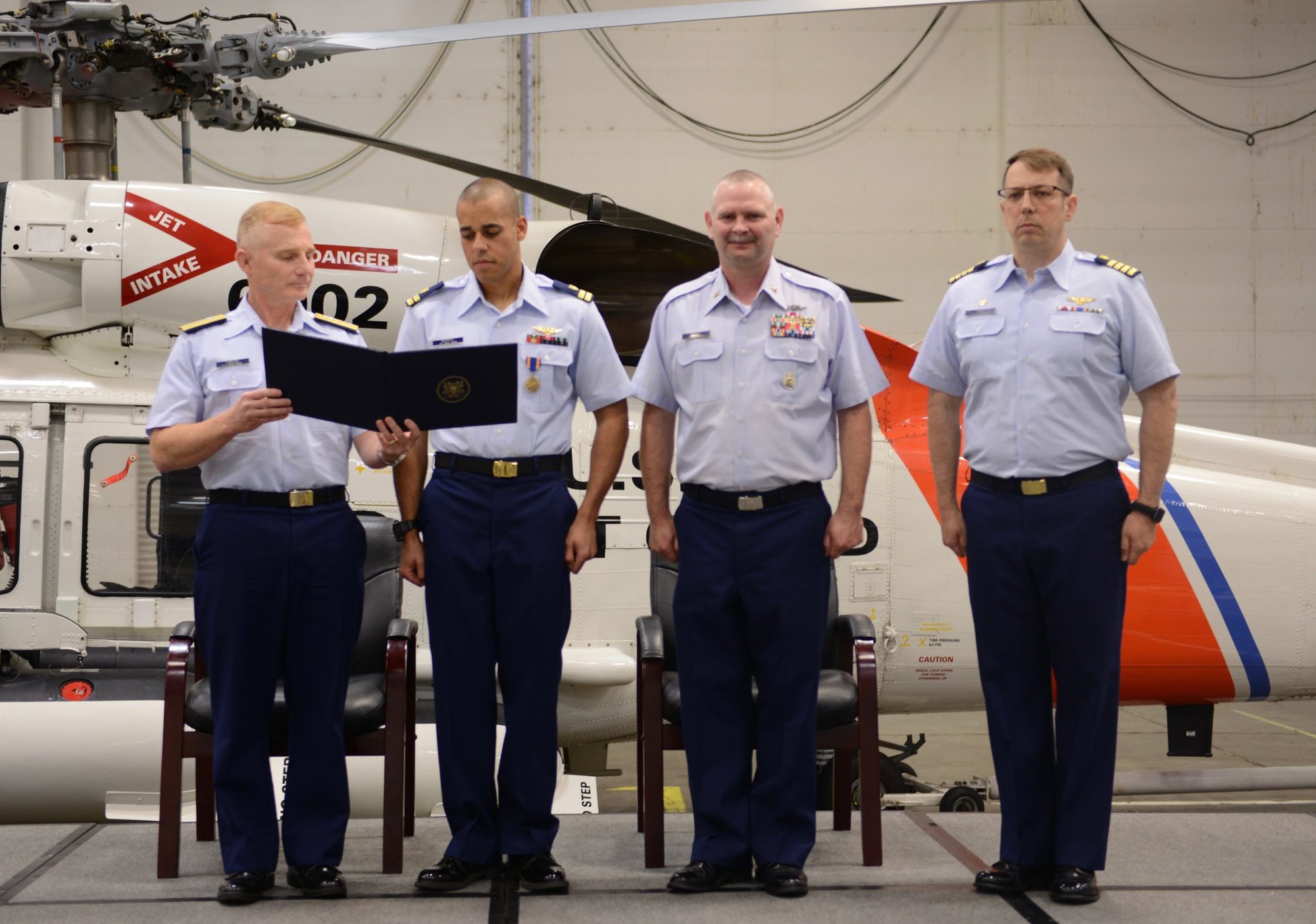
The aircrew watched as Espinosa-Gomez reached the skipper, the last man off the raft. He gave the rescue swimmer a bear hug in the water, patting him on the back in glee as they swam together into the murk and to a waiting basket.
When the captain reached the helicopter, he screamed and pumped his fists. Four for four; all survived.
But there was no room left in the cabin. He journeyed back to Sitka in the basket that saved him.
And Espinosa-Gomez still wasn’t done. A raft adrift at sea remains a potential hazard to navigation, and any other vessel that stumbles upon it will assume mariners inside need to be saved, triggering another SAR alarm for the Coast Guard’s aircrews.
“So he stabbed the raft violently with his survival knife, and then water slushed into it to expedite its quick demise,” Haas said, adding that he and Murphy want readers to know they never attended the Coast Guard Academy.
Officer Candidate School, they said loudly, puckishly, and in unison.
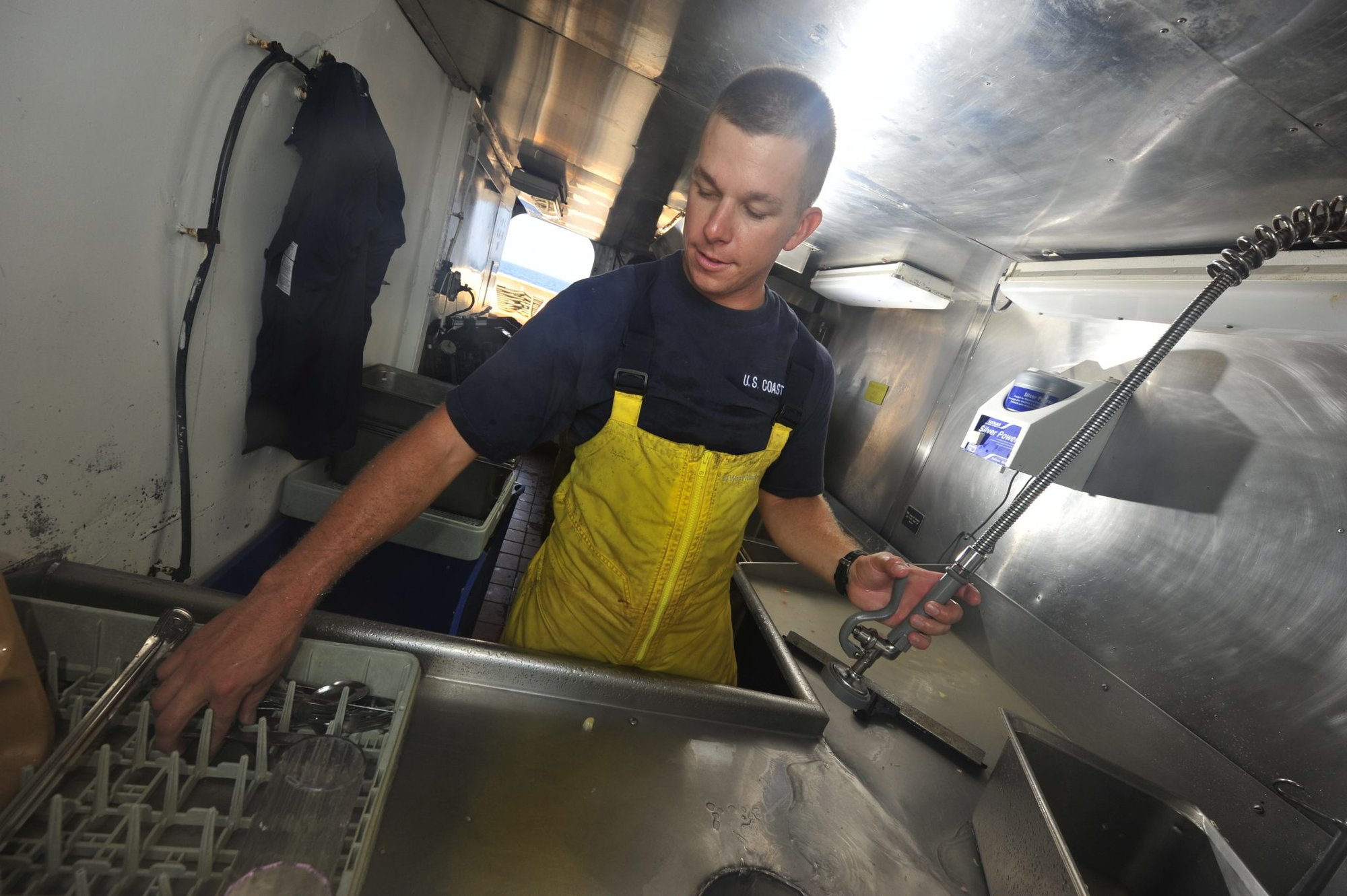
“What I take away from all this was what a testament it was to the training and professionalism of the Coast Guard, and just how good our guys and gals can be,” Murphy said.
When the Jayhawk landed, emergency medical technicians in Sitka whisked the four mariners off to the emergency room. Coast Guard officials told Coffee or Die the mariners were listed in stable condition.
“Something like this really isn’t your regular kind of rescue,” Haas said. “We talked to the survivors once they were in the ambulance, and we thanked them for being so prepared because it doesn’t always end up like this.”
“I commend the survivors in this case for having the boating safety equipment they used,” Nicholas Meyer, Sector Juneau command’s duty officer Wednesday night, said in a prepared statement emailed to Coffee or Die. “Their (Emergency Position Indicating Radio Beacon) confirmed their distress location allowing our aircrew’s timely response, and the survival suits and raft greatly contributed to their safety.”
The sinking of F/V Julia Breeze remains under investigation.
Read Next:

Carl Prine is a former senior editor at Coffee or Die Magazine. He has worked at Navy Times, The San Diego Union-Tribune, and Pittsburgh Tribune-Review. He served in the Marine Corps and the Pennsylvania Army National Guard. His awards include the Joseph Galloway Award for Distinguished Reporting on the military, a first prize from Investigative Reporters & Editors, and the Combat Infantryman Badge.
BRCC and Bad Moon Print Press team up for an exclusive, limited-edition T-shirt design!
BRCC partners with Team Room Design for an exclusive T-shirt release!
Thirty Seconds Out has partnered with BRCC for an exclusive shirt design invoking the God of Winter.
Lucas O'Hara of Grizzly Forge has teamed up with BRCC for a badass, exclusive Shirt Club T-shirt design featuring his most popular knife and tiomahawk.
Coffee or Die sits down with one of the graphic designers behind Black Rifle Coffee's signature look and vibe.
Biden will award the Medal of Honor to a Vietnam War Army helicopter pilot who risked his life to save a reconnaissance team from almost certain death.
Ever wonder how much Jack Mandaville would f*ck sh*t up if he went back in time? The American Revolution didn't even see him coming.
A nearly 200-year-old West Point time capsule that at first appeared to yield little more than dust contains hidden treasure, the US Military Academy said.












